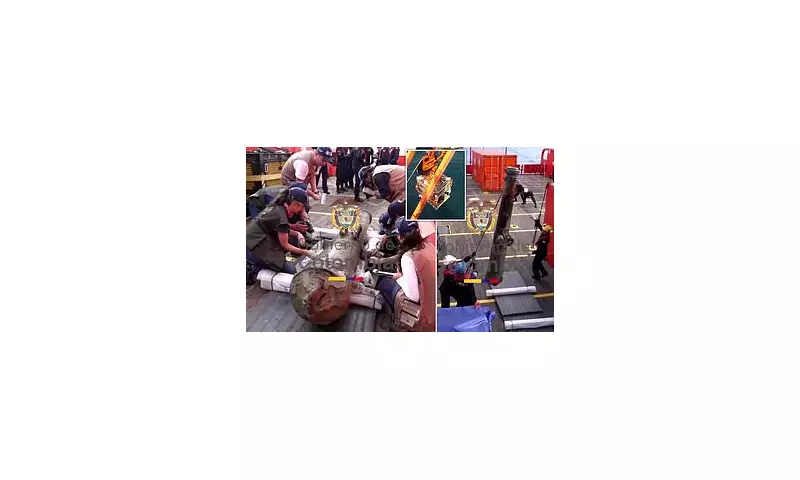
In a historic underwater operation, Colombian researchers have recovered the first artefacts from the legendary San José galleon, the Spanish warship that sank in the Caribbean Sea in 1708 carrying treasure now valued at an estimated $20 billion.
The Initial Recovery
Among the items carefully retrieved from the seabed nearly 600 metres (2,000 feet) below the surface were a bronze cannon in remarkable condition, three coins, and an intact porcelain cup. These objects represent the first physical evidence recovered since the wreck's discovery in 2015.
Colombian President Gustavo Petro personally oversaw the recovery operation, examining the well-preserved bronze cannon that still bears visible inscriptions, including the word 'Sevilla'. The artefacts will now undergo conservation processes at a specialised laboratory dedicated to the expedition.
A Ship Shrouded in History and Conflict
The San José was sailing as part of a Spanish treasure fleet from Portobelo, Panama, when it encountered a British squadron near Cartagena during the War of the Spanish Succession. Historical records indicate the 62-gun, three-masted galleon sank after being ambushed, taking with it 600 sailors; only eleven survived.
While the prevailing theory suggests an explosion sank the vessel, Colombia's government has indicated their research will explore alternative causes, including potential damage to the hull.
The ship's cargo is believed to include 11 million gold and silver coins, emeralds, and other precious items from Spanish-controlled colonies, earning it the nickname 'the Holy Grail of shipwrecks'.
Legal Battles and Scientific Investigation
The recovery is part of a government-authorised scientific investigation initiated last year to study the wreckage and the circumstances of its sinking. President Petro's administration has emphasised that the expedition's purpose is purely research-oriented, not treasure hunting.
The San José has been at the centre of international legal disputes for decades. Colombia is currently in arbitration with Sea Search Armada, a group of US investors who claim they discovered the wreck in 1982 and are demanding $10 billion – half of the treasure's estimated value. Spain has also staked a claim to the vessel, which was owned by the Spanish crown when it sank.
Archaeologist Daniela Vargas Ariza explained that her team used advanced underwater imaging to examine the site, including high-resolution scans of silver coins found near the stern. These coins, known as 'cobs' or 'macuquinas', bear the mark of the Lima Mint and are dated 1707, the year before the San José sank.
'This body of evidence substantiates the identification of the wreck as the San José Galleon,' Vargas stated. 'The finding of cobs created in 1707 at the Lima Mint points to a vessel navigating the Tierra Firme route in the early eighteenth century. The San José galleon is the only ship that matches these characteristics.'
The exact location of the wreck remains a Colombian state secret as research continues on one of the most significant maritime archaeological discoveries in history.





